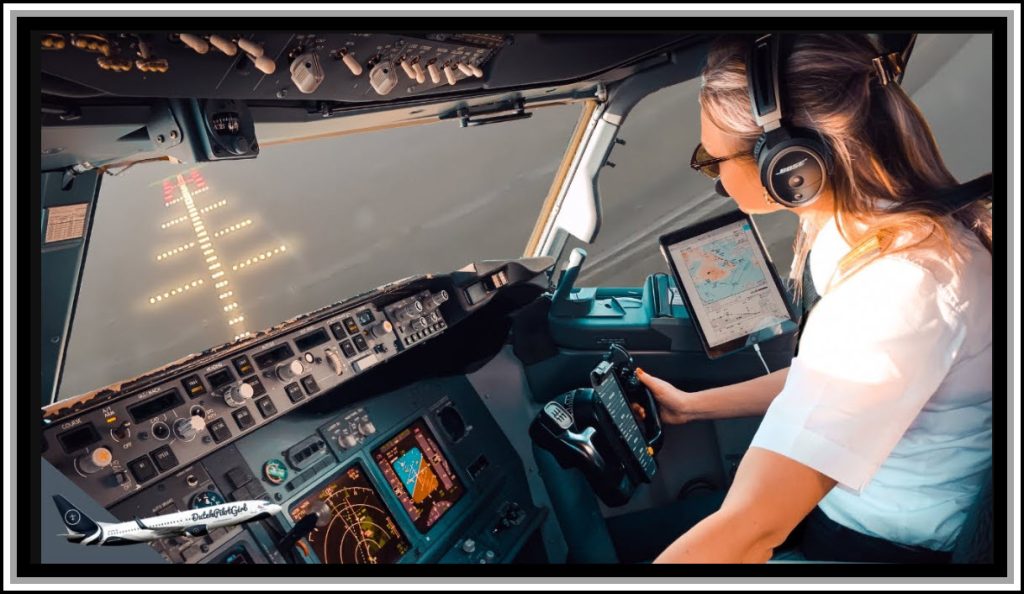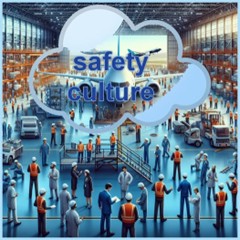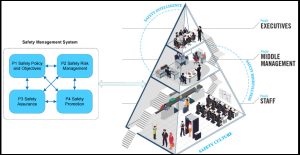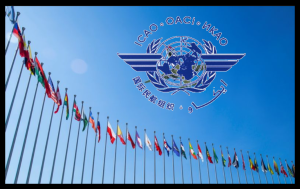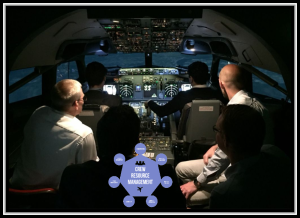An Outsider’s assessment of Aviation’s Safety Culture, highlighting human factors

Aviation professionals have strong differences of opinion about the future of single pilot and even autonomous cockpits. Proponents of this “advance” assert that computers are more reliable and even that the current state of automation may be atrophying stick and rudder skills. Traditionalists assert vehemently that human judgment is irreplaceable—FULL STOP
Chris Bates1, a writer for a Pennsylvania paper and whose writing record is limited about aviation, has published (below) a most thorough, insightful objective analysis of the interface between pilots and computers. His thesis does not extend to single pilot or autonomous flight level of conclusions, but he refreshes one’s attention to the paramount influence of human on safety culture (not just pilots, but all involved with all forms of flight).
Bates’ inception point is the DL275 event in which the technology of the Rolls-Royce Trent XWB’s anti-ice system malfunctioned and declaims that but for the pilots’ reaction, the incident would likely have been an accident. From there, he emphasizes HUMAN FACTORS and the correlative SAFETY CULTURE as essential elements for reducing risks in all aspects of aeronautical enterprises.
He points out that an organization’s regimen begins at the top and then be infused through all levels of the teams. The concept of ADOPTION of SAFETY FOCUS is diagrammed as A PYRAMID. Even after this proactive focus has been established, the leaders MUST reinforce their dedication to it as well as their expectation that information flow will be supported and not punished. These general directions need also be memorialized in policies, procedures and actual practice (recommendations announced and implemented).
ICAO’s role to assure that SAFETY CULTURE is not just a standard but an effective application among all governments and participants. Turning to aerospace’s newest form of flight, Bates reports that the AAM segment has been early in its adoption of this safety discipline, recognizing that it is “MORE ECONOMICAL” TO GET IT RIGHT FROM DAY 1 rather than wait until operations are set to begin.
This is not a self-serving paper by a professional proponent of SMS, SAS, SASO and the whole host of related acronyms; rather Bates’ perspective is that of an outsider with no bias. THANKS for a most instructive review and commentary. Hopefully the doubters will value such an independent opinion.
Aviation Safety Culture: Why People Matter More Than Technology
AUTHOR CHRIS BATES[1]
Aviation technology is much advanced, but such incidents as Delta flight DL275 diverted LAX for a severe anti-ice system issue related to its Rolls-Royce Trent XWB engine were critical and enough to remind everyone that no matter how high-tech the equipment is, it can backfire. Tech advances can dominate the news and lead the industry forward, but the BEDROCK OF AVIATION SAFETY IS JUST AS SURELY HUMAN FACTORS AND ORGANIZATIONAL CULTURE, the unseen element that underpins operational success in any and all flight operations.
Aviation experts know that safety is not simply a matter of having the latest cockpit upgrades or following the regulatory letter of the law. It is ABOUT CREATING CULTURES WHERE PEOPLE CAN SPEAK UP, DOCUMENT CONCERNS, AND LEARN FROM SUCCESSES AND NEAR-MISSES. This culture has been a key factor in commercial aviation’s record of tremendous safety and is now gaining hold in business aviation, general aviation, and nascent Advanced Air Mobility (AAM) categories.
The Critical Role of Human Factors in Aviation Safety
Safety can be facilitated by technology, but it is maintained by people. This underlying truth informs the way safety management at top aviation companies is applied to all facets of their operations. The best super-navigation systems, weather radar, and cockpit automation add essential safety features, but they will never take the place of the skill, judgment, communication, and decision-making that pilots and other aviation professionals exercise on every flight.
Human factors run the gamut from how crews talk to one another in high-stress circumstances to how maintenance teams record possible issues. This directly impacts safety performance as they dictate how well people interact with technology, react to surprises and maintain situational awareness while under pressure.
MORE STUDIES CONFIRM THAT MOST AVIATION ACCIDENTS ARE CAUSED BY A CONVERGENCE OF A NUMBER OF FACTORS INCLUDING HUMAN ERROR, RATHER THAN A SOLE POINT OF FAILURE. This is the exact reason why effective aviation safety culture involves equal amounts of investment in people skills as it does in new technology.
Building Safety Culture From the Ground Up
Safety culture begins at the top and permeates every level of an organization. IATA defines it as
“a positive safety culture supports open reporting and a learning environment; and enables effective management of safety risks and encourages the active participation of employees in the daily pursuit of safety”.
The industry’s forward-thinking operators have long understood that successful safety programs are generated from behavior, communication, and leadership — and not just mechanics and machines. This results in organizations that move safety from a compliance to a collective value.
Leadership’s Role in Safety Culture
Why It Matters: Safety Culture Starts at the Top Executive leadership drives safety culture across an organization. When all leaders walk the talk and express real commitment for safety over operations pressure, it gives permission for everyone in the team to make safety number one in the way they make decisions every day of the working week. This logocentric method places safety at the heart of the organization’s ethos instead of a mere operational constraint.
Proactive safety leadership requires daily discussions regarding the priority of safety, consistent demonstration of support for safety action, and reinforcement of safety values through allocation of resources and decision-making. Leaders who engage in safety discussions and listen to the concerns of the frontline, develop environments in which safety culture becomes established.
Communication and Reporting Systems
Free and open dialogue is the foundation of a stratified safety culture. Organizations that foster a positive safety culture put processes in place that ensure there is honest reporting of concerns, near-misses and issues with operations without retaliation. These incident reporting systems are early warning systems for safety and environmental problems and opportunities for continual improvement.
Confidential reporting channels, regular safety bulletins ,and feedback methods all encourage open lines of communication. When employees feel comfortable raising concerns and recommended changes, organizations are better able to detect and address safety threats before they escalate.
Standardized Safety Management Systems
Standardized SMS is more and more crucial for business and general aviation operators. These prescriptive methods enable operators to systematically identify hazards, analyze risk, and develop mitigation actions regardless of size or complexity.
SMS processes are systems created to handle safety in a structured way throughout all lines of business. They define explicit procedures for identifying hazards, assessing risks, monitoring safety performance, and pursuing continuous improvement. This systemised method means safety management is maintained regardless of how small to large scale operations become.
Global Harmonization Through ICAO
Some 200 countries are cooperating under the auspices of the ICAO to standardize safety mechanisms and to set globally applicable rules. This joint effort provides harmonised levels of safety amongst various aviation markets and operational environments.
The international nature of ICAO’s safety management processes is intended to provide uniform safety culture aspects of aviation and frameworks for SMS systems wherever aircraft are flown. This harmonization of regulations facilitates international air operations while the highest level of safety is retained in all participating countries.
Advanced Air Mobility and Safety Culture Integration
Developers of AAM are instilling safety culture lessons early in the development process, integrating safety principles the day that development begins, not the day that the first aircraft takes off. That proactivity encompasses anonymous reporting systems, transparency principles about mistakes, and regular safety reviews that stretch from engineering to operations.
By building on a culture of accountability and trust, these companies are putting the structure in place for safe operations over the long term. AAM companies also understood that it will be MORE EFFICIENT to develop a positive safety culture in the development phase than it would be to create one during operations.
Modern communications systems are a critical element in underpinning this safety work. IP2 Network is a next-generation networking solution that transcends the constraints of legacy IPv4 and IPv6 protocols for more resilient and secure communications solutions for real-time sharing of safety data with time-critical, synchronous access for distributed aviation operations safety organizations to jointly manage safety.
Training and Safety Value Reinforcement
Training programs provide vital means to inculcate safety values within aviation companies. Contemporary training methodologies go beyond technical skill, and instruct in decision-making under duress, communications protocols, and crew resource management concepts.
Crew Resource Management
Crew Resource Management (CRM) training is designed to improve interpersonal skills, communication, and decision-making to improve safety performance. CRM is relevant to every form of aviation and should be addressed in every aviation context, from commercial airline crews through general aviation single-pilot operations.
Good CRM training can help aviation workers understand their shortfalls, communicate better with other colleagues, and make better decisions under pressure. Such competences are crucial both during normal operations and in emergency cases.
Decision-Making Under Stress
Multiple times each day, aviation crews are forced to make quick, but precise, decisions in life and death situations. Training courses that recreate these conditions stimulate the development of the mental skills required to continue practicing safety in high stress situations.
Training scenarios, simulator training, and coupled decision making techniques give aviation the tools to deal with stress while being focused on safety. These methodologies train muscle memory for making safety-critical decisions.
Proactive Safety Analysis and Risk Management
High-performing safety cultures are FOCUSED ON BEING PROACTIVE RATHER THAN REACTIVE. Rather than reacting to accidents, they review near misses, operational data, and leading indicators to recognise early warning symptoms of the growing danger.
Data-Driven Safety Management
Today’s aviation activities produce huge quantities of safety information via flight data monitoring, maintenance logs, and operations reports. Companies with safety cultures from strong to mid-size can take that data and trend it, forecast future concerns, and get ahead of them.
SOPHISTICATED ANALYTICS AND REPORTING SYSTEMS enable aviation specialists to trace patterns that could point to evolving threats to safety. This provides organizations with the ability to react to potential issues before they have an effect on safety performance.
Learning From Near-Misses
Close call situations contribute to learning that reduces the likelihood of accidents in the future. When serious accidents are avoided, near-misses are seen as opportunities for learning (rather than failure) and all factors are reported and analyzed openly.
This learning perspective allows organizations to discover how their systems and practices work in practice. The investigation of near misses often illustrates systemic weaknesses that may be addressed through inline training or equipment modifications.
The Future of Aviation Safety Culture
The best safety programs will be those that realize that technology provides for safety; however, people and culture sustain it, as new aircraft generation aircraft arrives as the aviation fleet modernizes in the future. Organisations that enable their people to speak up, capture concern, and learn from their experiences are better-placed to navigate and lead through complexity and change.
The safety culture in aviation will remain a dynamic function about technological (new aircraft and control systems, new systems of aircraft operations), organizational (the new organization and air-traffic control systems), and governmental (new governmental rules of the industry) changes. But the bedrock values of open communication, ongoing learning, and managing risk proactively will continue to be the cornerstones of aviation safety success.
The convergence of AI, automation and novel operations will present new challenges and opportunities to aviation safety culture. The groups that keep a clear focus on human factors while embracing new technology will be in the best possible position to achieve even better safety performance in the changing world of aviation.
1Bates, whose resume is somewhat of an enigma, has written on the legal and health risks posed by counterfeit products sold through TikTok Shop. This article, however, exhibits through research of aviation safety, especially the interface between the cockpit and technology; so, his insights seem useful. Here is an AI generated list of his publications:
- Health hazards: Counterfeit beauty items containing toxic substances like lead and mercury.
- Legal consequences: Buyers—not just sellers—can face fines or prosecution under U.S. intellectual property laws.
- Consumer safety tips: Bates outlines how to identify verified sellers and avoid scams.
- Lakeland Currents: Bates is a prolific contributor, writing on consumer safety, health trends, tech gadgets, and lifestyle topics. His work includes investigative pieces on TikTok counterfeit crackdowns and electric bike safety.
- DownBeach, Sea Isle News, Crookston Daily Times: He’s also active in regional outlets, covering entertainment, digital marketing, and online gaming trends.
- Port Townsend & Jefferson County Leader: Co-authored a community-focused piece on Veterans Day, emphasizing civic engagement and local support networks.
- These contributions suggest a strong background in data science or health informatics, possibly through collaboration with NHS England and OpenSAFELY.
- Muck Rack Profiles: Multiple profiles exist, reflecting his diverse publication history across outlets like Nature, POLITICO Europe, and SC Magazine UK.
His work reflects a strong public interest angle, blending investigative reporting with actionable advice.

